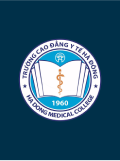A Comprehensive Assessment of Soft Tissue Esthetics

Xem mô tả
0
Xem & Tải
0
Tóm tắt
Mô tả
This thesis investigated the efficacy of two techniques, digital spectrophotometry and narrow-band endoscopy, in observing and describing gingival tissue in a patient population. The efficacy of existing gingival restorative materials in mimicking the optical qualities of the participant pool was also investigated using spectrophotometric analysis.
The spectrophotometric analysis examined the ability of a digital, non-contact, full-tooth spectrophotometer (Crystaleye; Olympus, Japan) to evaluate objectively gingival color, thickness, and translucency in 100 participants drawn from the patient population of a dental school. Color metrics of gingival soft tissue were obtained from all teeth in the maxillary sextant in the participant population and stratified with respect to tooth location, type, and patient sex and ethnicity. It was concluded that:
• In the anterior maxillary gingiva, the luminance (brightness) of the periodontal gingival tissues decreased, whereas the chromacity (color saturation) increased, as the site progressed more posteriorly in the mouth.
• Gingival color varied significantly with patient sex, with males exhibiting lower value (darker/grayer) gingiva of a more purple hue.
• Gingival color varied significantly with patient ethnicity, with White participants exhibiting brighter, yet less chromatic gingiva than Black, Asian, and Hispanic participants.
• Gingival thickness measured via cast analysis was found to be 13% thicker in the male population.
• Gingival translucency was observed to be correlated linearly to gingival thickness calculated using two existing metrics and one novel metric. Female participants were found to have significantly more translucent gingiva than male participants.
A spectrophotometric coverage error analysis investigating the efficacy with which 5 different brands of gingival acrylics replicated the optical properties of the participant population was performed. It was determined that significant differences existed in the coverage errors of different materials, with some of the shade guide sets exhibiting average best-matches outside of the range of clinical acceptability. It was observed that the coverage errors of the shade guide sets were not determined by the number of tabs in the set, but rather by the fitness of a few isolated tabs within the participant population. In a proof-of-concept analysis, a two-tab shade guide set was conceived that was optimized for the sample participant population that outperformed all other sets in coverage errors. This may have implications in the development of future spectrophotometrically guided shade sets optimized for patient populations.
Lastly, using a clinical endoscope (CV-190; Olympus, Tokyo, Japan) equipped with narrow-band imaging capabilities, the microvasculature of the marginal gingiva in the esthetic zone was observed and categorized. The analysis focused on the complexity of the intrapapillary capillary loop (IPCL), a diagnostic indicator of mucosal inflammation. No significant correlations were determined between the classifications of the observed IPCLs and the spectral data obtained, suggesting that within the limitations of this study, endoscopic imaging may be limited in quantitative or diagnostic applications, although it is useful for subjective visualization of the IPCLs.
Color Science; Gingival Color; Gingival Esthetics; Color Measurement in Dentistry; Gingival Translucency; Gingival Restorative Materials; Pink Esthetics; Pink Acrylics; Gingival Biotype; Gingival Thickness; Coverage Error; Intrapapillary Capillary Loop; Gingival Shade Guides;
Color Science; Gingival Color; Gingival Esthetics; Color Measurement in Dentistry; Gingival Translucency; Gingival Restorative Materials; Pink Esthetics; Pink Acrylics; Gingival Biotype; Gingival Thickness; Coverage Error; Intrapapillary Capillary Loop; Gingival Shade Guides;
Năm xuất bản
Tác giả
Grieco, Peter C.